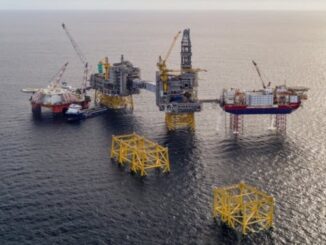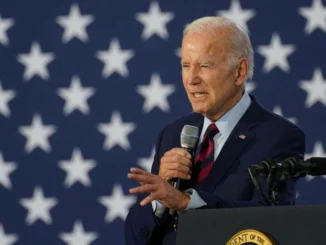
As the calendar flips to the end of July 2025, the U.S. dollar has notched its strongest monthly performance since President Donald Trump began his second term in January. According to Bloomberg, the Bloomberg Dollar Spot Index surged by 2.5% this month, buoyed by robust economic data and the administration’s aggressive trade policies.
This marks a rare positive streak for the greenback amid broader global uncertainties, with U.S. GDP expanding at a solid 3% annualized rate in the second quarter, defying expectations of a slowdown.
Are you from California or New York and need a tax break?
For the energy sector, this economic resilience and dollar strength present a mixed bag: while a stronger currency typically exerts downward pressure on commodity prices, Trump’s pro-energy agenda could unlock new opportunities in oil, gas, and related investments.
Key Market Indicators:
A Snapshot of July 31, 2025The dollar’s rally aligns with a broader picture of U.S. economic stability, but energy markets are showing signs of volatility amid supply dynamics and geopolitical factors. Here’s a roundup of critical indicators as of today, compiled from real-time data sources:
|
Indicator
|
Value
|
Daily Change
|
Notes
|
|---|---|---|---|
|
Bloomberg Dollar Spot Index
|
+2.5% (monthly)
|
N/A
|
Best monthly gain in Trump’s term, driven by strong GDP and trade deals.
|
|
WTI Crude Oil
|
$70.15 per barrel
|
+1.32 (futures continuous)
|
Prices are hovering around $70, influenced by lower refining margins and global demand concerns.
|
|
Brent Crude Oil
|
$70.90 per barrel
|
+1.42 (futures continuous)
|
Slightly higher than WTI, reflecting European market pressures. |
|
Natural Gas
|
$3.02 per MMBtu
|
-0.073 (futures continuous)
|
Down slightly, with EIA reporting a 23 Bcf build in stocks for the week ending July 25. |
|
RBOB Gasoline
|
$2.28 per gallon
|
+0.007 (+0.31%)
|
Modest gains amid seasonal demand. |
|
Heating Oil
|
$2.42 per gallon
|
+0.0055 (+0.23%)
|
Stable, but impacted by broader oil trends. |
|
Gold
|
$3,340.80 per ounce
|
N/A
|
Record highs persist, acting as a hedge against inflation. |
|
Silver
|
$37.15 per ounce
|
N/A
|
Following gold’s upward trajectory. |
Stock markets are also reflecting optimism, with energy-heavy indices like the S&P 500 Energy Sector showing resilience despite commodity price fluctuations. Global factors, including a 9.7% rise in the World Bank’s energy price index in June (driven by an 11.3% surge in crude oil), underscore ongoing supply-side pressures.
However, non-energy commodities dipped by 1.1%, highlighting the dollar’s suppressive effect on import-dependent assets.
Federal Reserve signals of moderating growth add a layer of caution, but the economy’s hold-up—evident in low jobless claims and steady consumer spending—supports the dollar’s ascent.
For energy traders, this environment demands vigilance, as a strong dollar makes U.S. exports pricier and could dampen demand from emerging markets.
Commodities in a Strong Dollar Era: Navigating Headwinds and Opportunities
A robust dollar traditionally weighs on commodity prices, as most are denominated in USD, making them more expensive for foreign buyers. In 2025, this dynamic is amplified by ample supply in key areas like wheat, steel, and crude oil, which has led to inventory builds and price softening.
Yet, analysts remain cautiously optimistic, pointing to inflation trends, U.S. dollar movements, and physical supply conditions as pivotal watchpoints.
The best commodity investments in this context lean toward those with strong domestic demand or structural tailwinds:
- Natural Gas: High liquidity and potential for winter-weather-driven spikes make it a top pick. With prices around $3 per MMBtu, experts see upside from U.S. export growth and Trump’s deregulatory push.
- Oil (Crude and Refined Products): Despite current dips, oil remains liquid and volatile, ideal for traders. Agricultural commodities like cocoa (up 185% in 2024 due to weather issues) could carry momentum, but energy-focused investors should prioritize oil for its ties to U.S. production.
- Metals like Gold and Silver: As inflation hedges, these shine in uncertain times, with gold hitting record highs despite the dollar’s strength.
Commodity ETFs such as FGDL (gold-focused) or USG (broad commodities) offer diversified exposure and have been top performers.
- Agriculture: Gains in this sector could offset metals’ declines, per Q4 2024 trends, making it a balanced play in a commodity bull market scenario.
Overall, a strong dollar reshapes the landscape with supply surpluses posing downside risks, but liquidity in energy commodities provides trading edges.

Top Oil and Gas Investments Under Trump’s Administration
President Trump’s “Unleash American Energy” executive order, signed in January 2025, aimed to boost domestic production through deregulation and resource access.
While the anticipated drilling boom hasn’t fully materialized—due to recession fears, tariffs, and competitive clean energy—the administration’s tax incentives and regulatory relief favor fossil fuels
Industry handouts, including carbon capture subsidies and bonus depreciation, could cost the public $80 billion over the next decade but create windfalls for select players.
Here are standout opportunities:
- Exxon Mobil (XOM): As a domestic exploration and production giant, Exxon benefits directly from Trump’s pro-drilling stance and export focus.
- Chevron (CVX): Similar to Exxon, Chevron’s U.S.-centric operations position it well for regulatory easing and trade deals.
- Cameco (CCJ): Nuclear energy gets a boost from Trump’s overhaul of the Nuclear Regulatory Commission, making uranium producer Cameco a sleeper hit in the broader energy mix.
- Pipeline and Midstream Firms (e.g., Kinder Morgan – KMI): With increased production, infrastructure plays thrive under reduced permitting hurdles.
- Cleantech Hybrids in Oil/Gas: Even as Trump champions fossils, some cleantech winners emerge, like carbon capture-integrated operations.
-
Privately held oil and gas investments with tax advantages.
Despite enthusiasm, oil executives are tempering expectations amid weaker prices and global headwinds.
Investors should monitor the’ impact of tariffs, which some analysts say could spark recessions and curb demand. But in the short run, it seems to be playing out that tariffs are not harmful, and a significant trading bloc is shifting around the world. As we have mentioned, it appears markets are bifurcating into two groups—either all in on Net Zero and deindustrialization, or looking for low-cost energy. You can enjoy low-cost energy and contribute to a healthier environment with exemplary leadership.






